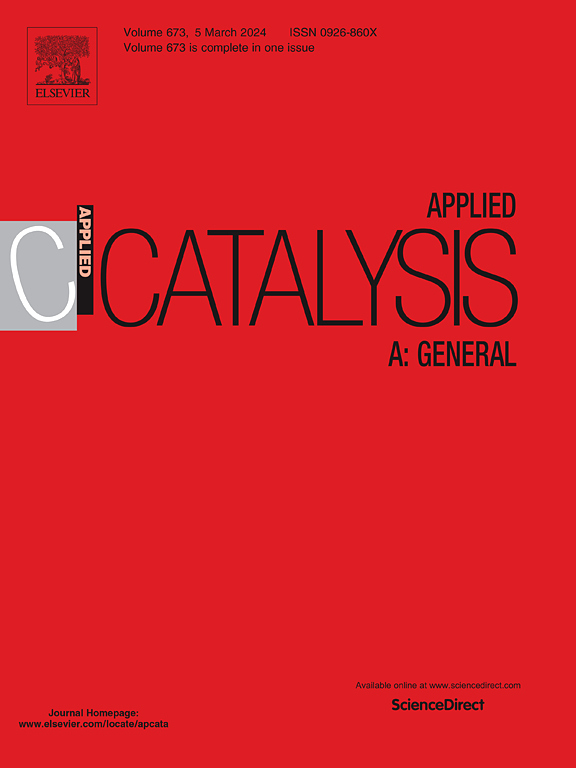Green synthesis of furan di-Schiff bases via a one-pot tandem amination-oxidation-amination process under room temperature
IF 4.7
2区 化学
Q2 CHEMISTRY, PHYSICAL
引用次数: 0
Abstract
Furan-based double Schiff bases (DRIF), multifunctional molecules derived from biomass, were possessed significant application potential in various fields including sensors, stabilizers, dyes, and pharmaceuticals. The synthesis of DRIF typically involves a series of steps: amination, oxidation, and subsequent amination. However, this process could encounter side reactions such as overoxidation, aldol condensation, and cross-oligomerization. Herein, an efficient TEMPOL/Cu(NO3)2 catalytic system for one-pot process with 5-HMF and n-butylamine as model reactant to produce 2,5-di(butyliminomethyl)furan (DBIF) at room-temperature was developed. Characterization techniques including FT-IR, ESI-MS, GC-MS, and 1H NMR were employed to identify key intermediates and reaction mechanisms. The maximum DBIF yield of 97 % was attained. Furthermore, the study extended the amine oxidation amination reactions using HMF and furfural with various primary amines, demonstrating good substrate compatibility. Ultimately, a one-pot two-step method was successfully employed to obtain a total yield of 63 % DBIF from fructose, further highlighting the application potential of this catalytic system.
室温一锅串联胺化-氧化-胺化工艺绿色合成呋喃二希夫碱
呋喃基双席夫碱(DRIF)是一类从生物质中提取的多功能分子,在传感器、稳定剂、染料和药物等领域具有重要的应用潜力。DRIF的合成通常包括一系列步骤:胺化、氧化和随后的胺化。然而,这一过程可能会遇到副作用,如过氧化、醛醇缩合和交叉寡聚。本研究以5-羟甲基糠醛和正丁胺为模型反应物,建立了一锅法制备2,5-二(丁基甲基)呋喃(DBIF)的高效TEMPOL/Cu(NO3)2催化体系。采用FT-IR、ESI-MS、GC-MS和1H NMR等表征技术鉴定了关键中间体和反应机理。DBIF收率最高可达97% %。此外,该研究扩展了HMF和糠醛与多种伯胺的胺氧化胺化反应,表现出良好的底物相容性。最终,采用一锅两步法成功地从果糖中获得了总收率为63 %的DBIF,进一步突出了该催化体系的应用潜力。
本文章由计算机程序翻译,如有差异,请以英文原文为准。
求助全文
约1分钟内获得全文
求助全文
来源期刊

Applied Catalysis A: General
化学-环境科学
CiteScore
9.00
自引率
5.50%
发文量
415
审稿时长
24 days
期刊介绍:
Applied Catalysis A: General publishes original papers on all aspects of catalysis of basic and practical interest to chemical scientists in both industrial and academic fields, with an emphasis onnew understanding of catalysts and catalytic reactions, new catalytic materials, new techniques, and new processes, especially those that have potential practical implications.
Papers that report results of a thorough study or optimization of systems or processes that are well understood, widely studied, or minor variations of known ones are discouraged. Authors should include statements in a separate section "Justification for Publication" of how the manuscript fits the scope of the journal in the cover letter to the editors. Submissions without such justification will be rejected without review.
 求助内容:
求助内容: 应助结果提醒方式:
应助结果提醒方式:


